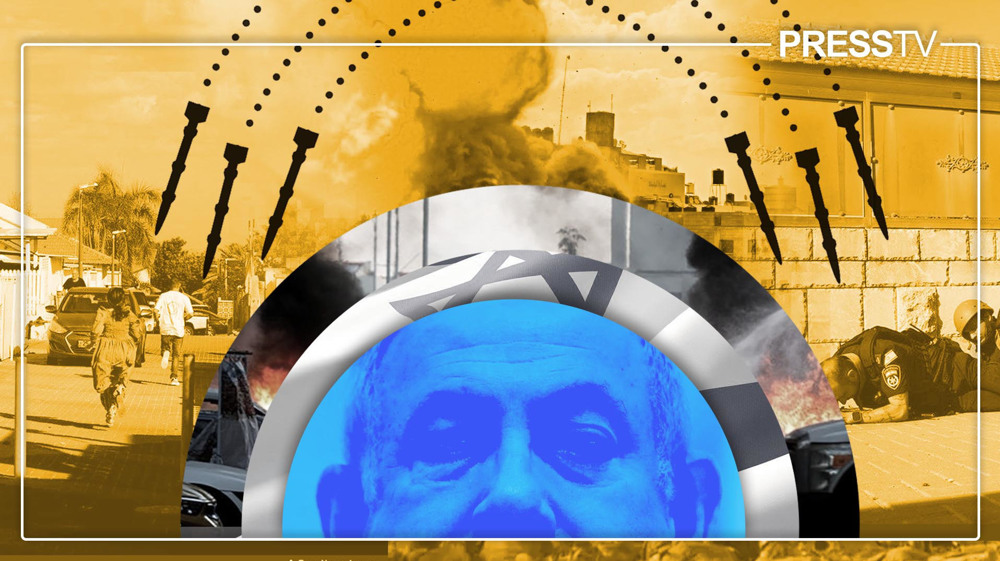
By Ivan Kesic
The Al-Aqsa Storm operation launched by the Palestinian resistance movement Hamas in the wee hours of Saturday morning laid bare the myth of the Israeli regime’s invincibility.
More importantly, it exposed yet again the hollow claims of the regime in Tel Aviv that its air defense systems, especially the much-hyped Iron Dome system, are impenetrable.
A barrage of rockets rained on the occupied territories on Saturday, killing more than 1,000 Israeli soldiers and settlers, demonstrating the upper hand of the Palestinian resistance groups.
With the latest Palestinian operation, numerous Israeli myths were debunked – a regime that is impossible to invade, an omnipotent spy agency, the Merkava tank, and the Iron Dome system.
Another round of embarrassment
On the first day of the Al-Aqsa Storm operation on Saturday, Hamas and other Palestinian resistance groups fired at least 5,000 rockets, targeting strategic places throughout the occupied territories.
Despite the regime's appeals to settlers not to post videos of rocket-hit sites to avoid weakening the morale of soldiers and exposing the damage, hundreds of videos quickly made it to social media.
Missiles hit critical infrastructure in dozens of heavily militarized places and caused massive damage, including two fuel storage facilities that billowed thick black smoke.
Palmachim Airbase was also hit, as well as several military bases along the border with Gaza, which were then quickly captured by the resistance fighters.
On the third day of the operation, multiple videos confirmed that the Ben Gurion Airport terminal near Tel Aviv had also been hit, causing panic among settlers fleeing the occupied territories.
Ideally, none of the above targets should have been hit, as the purpose of the air-defense systems is to protect strategic locations and populated areas. However, the systems again failed miserably.
Proven ineffectiveness
Two months ago, the Press TV website published an analysis addressing official Israeli manipulations of the effectiveness of the Iron Dome anti-aircraft system, all with the purpose of export and profit.
This system is designed to intercept and destroy short-range rockets and artillery shells and has been touted in recent years as extremely successful with "90 percent" effectiveness.
However, such claims are just a cheap marketing ploy by the manufacturer, the Israeli regime and their sponsored articles, without any reliable independent confirmation.
Once again, as was the case with previous Palestinian retaliatory attacks, the Zionist authorities were reluctant to acknowledge the real damage caused by the barrage of Palestinian rockets.
Instead, they resorted to new incoherent justifications, claiming that the damage was limited and that the system was overwhelmed because Hamas fired 5,000 rockets in just 20 minutes.
According to available information, there are ten Iron Dome batteries across the occupied territories, each of which includes three to four launchers with 20 interceptor missiles.
Now their military sources are talking about the urgent need to double up to 20 batteries and acquire a massive number of new interceptors, which will be paid by the United States.
System's true purpose
Until 2021, the US government spent around $1.6 billion on the Iron Dome program, with another $1 billion approved by the US Congress in 2022.
Each battery costs $50 million, and each interceptor missile $50,000, but the price per interception is around $150,000, which makes the system extremely bad in terms of cost-effectiveness.
By a simple calculation, the mere attempt to shoot down all the Palestinian rockets fired in the first minutes of the Al-Aqsa Storm operation would cost as much as $750 million, although this is practically impossible due to the need to reload the batteries.
The development of this system began in the mid-2000s, at a time when the Palestinians had rudimentary rockets in small numbers, but with the technological progress of the resistance movement's rockets, the Iron Dome lost its effectiveness and purpose.
In the meantime, Israeli propaganda has built a mythical image of a perfect air-defense system with maximum efficiency, and even today it is trying with all its might to maintain it.
The reasons for this are multiple: to justify the expensive domestic and American financing of the project, to maintain a positive psychological effect on its citizens, and not to embarrass itself in front of the world to which it is aggressively trying to export its military equipment.
Fake assurances to settlers
Before the development of the system against artillery shells and short-range missiles, Israeli settlers were instructed how to escape to shelters in a matter of few seconds in the event of an attack, which caused general panic and sometimes even casualties.
By building the image of Iron Dome, the panic is somewhat mitigated by the psychological belief that they are protected by a powerful system and that the earlier risk is reduced to 10 percent.
This time, the Israeli authorities issued a call to citizens to stock up and hide in shelters for three days, which is evidence against the effectiveness of the Iron Dome, designed to keep the population safe.
Propaganda intended for export still continues, as videos of the "incredible" Iron Dome are again circulating on the Internet, showing alleged spectacular night interception of enemy missiles.
In all those videos, there are no light traces of two missiles (interceptor and enemy) but only of the former, nor are the warhead explosions of the latter evident, which proves that it was self-destruction due to an unsuccessful intercepting.
As mentioned in the previous Press TV website analysis, Israel's goal was to export its Iron Dome to countries that are in a relatively stable environment and there is no danger of imminent armed conflict, hence there's also no fear of independent non-Israeli verification of their effectiveness.
This would earn Israel billions of dollars and happily repay its failed project, but after the latest embarrassment caused by the Palestinian operation, that is even less likely than before.





Leave a Reply